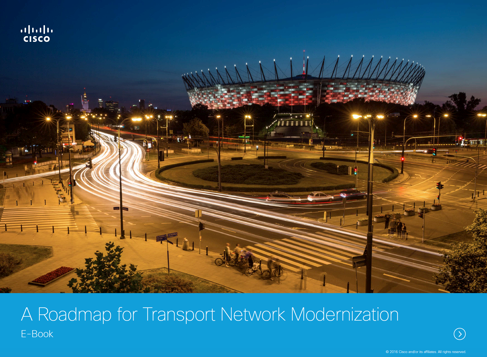































By: Alison Izard,Marketing Manager, Cisco

In our recently published E-Book,A Roadmap for Transport Network Modernization, we use a step-by-step checklist to evaluate what should be considered before embarking on a network modernization project. Our checklist seeks to address a core set of modernization requirements all service providers share. If you haven't already developed a list of your own or are in the process of developing an RFP, our checklist is an excellent starting point for assessing the fit and function of different transport modernization solutions.
Transitioning from TDM to IP
Before you begin you should consider how will you transition from an aging TDM infrastructure to a next generation carrier class solution. Many telecom providers still generate significant revenues from TDM-based services, as a significant percentage of their customer traffic flows through TDM interfaces. However, the goal of most network modernization projects is to transition to an all-packet network. So how do you find a balance? How can you continue to meet the needs of your TDM customers, while efficiently scaling to meet the growing volume of IP traffic? A prudent approach would be a hybrid network supporting TDM, Ethernet, and IP. Transitioning with this type of solution would support your business needs now and provide a solid foundation for your next-generation transport network when you are ready to go to a full IP network.
The Requirements Checklist
At a high level, our checklist addresses the effects of a new solution on an organization's business model, future growth opportunities, OpEx and CapEx targets, and integration into existing operational models, which includes staffing, skill sets, and OSSs and business support systems (BSSs). This checklist is not comprehensive. There are other factors unique to each business that should be considered, they include: assessing the current state of your legacy technology infrastructure, the size of your business, your geographic location, customer demographics, and the competition in your market.
The list that follows is designed to help you examine both generic and unique requirements that you should consider as you evaluate transport network modernization solutions.
If you are ready to modernize your network, find out how withA Roadmap for Transport Network Modernization.Download your copy today.
 Alison is a marketing manager with the Service Provider Cloud, Infrastructure & Business Solutions team. Her area of expertise is network management software, where she has more than 16 years of experience working and consulting for companies including InfoVista, Qovia, Ipswitch, CITTIO and RiverMuse. Prior to joining Cisco, Alison had her own product/digital marketing agency, where she consulted with a broad range of B2B and B2C clients. Although the core of her professional experience is in product/digital marketing, she's also worked in product management, technical training and instructional systems design.
Alison is a marketing manager with the Service Provider Cloud, Infrastructure & Business Solutions team. Her area of expertise is network management software, where she has more than 16 years of experience working and consulting for companies including InfoVista, Qovia, Ipswitch, CITTIO and RiverMuse. Prior to joining Cisco, Alison had her own product/digital marketing agency, where she consulted with a broad range of B2B and B2C clients. Although the core of her professional experience is in product/digital marketing, she's also worked in product management, technical training and instructional systems design.
 Tags quentes :
Digital Transformation Hub
DWDM
transport
circuit emulation
NCS4000
NCS2000
Tags quentes :
Digital Transformation Hub
DWDM
transport
circuit emulation
NCS4000
NCS2000